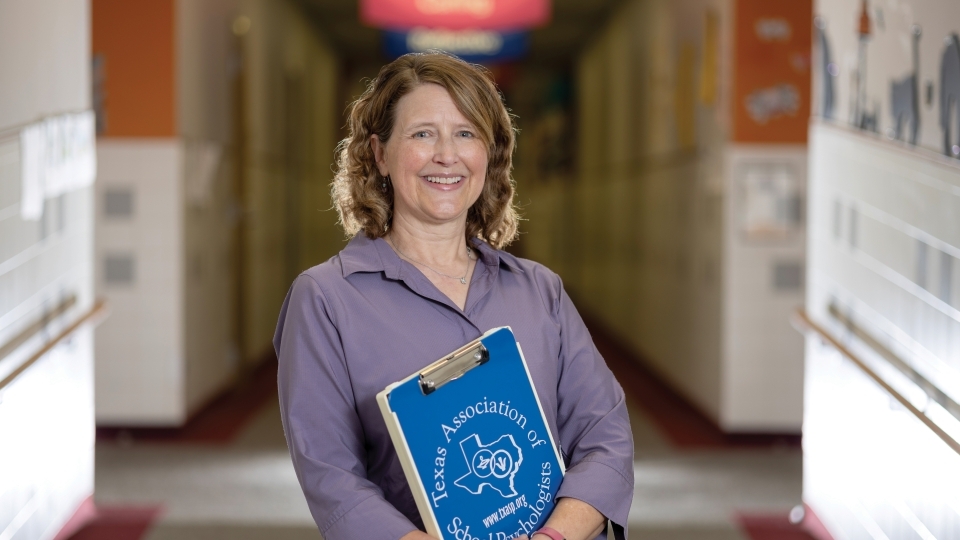Tackling Children’s Mental Health Struggles
February 5, 2024
- Author
- Mary Elizabeth DeAngelis

A few months after a mass shooting left 19 children and two educators dead in a Uvalde, Texas, elementary school last year, a student in counseling with Austin, Texas, elementary school psychologist Katherine Griffin-Erickson ’90 posed a troubling question.
“What’s the plan?” he asked, eyes darting around her office. “Where can we hide if somebody comes in and starts shooting?”
Sadly, it wasn’t the first or last time she had to answer that. That’s reality in America, which has had at least 389 school shootings since the 1999 Columbine High School slaughter that left 12 students, a teacher and the two teenage gunmen dead, according to the Washington Post’s school gun violence tracker.
From 20 first-graders and six educators killed in 2012 at Sandy Hook Elementary, to the 2018 murders of 17 people at Marjory Stoneman Douglas High School, to neighborhood fights that spill into school parking lots, violence creates mental health issues for children and educators.
“We’re carrying the burden of guns. These are little kids who are worried about someone coming into school to commit violence,” Griffin-Erickson says. “It’s hard as an adult to not be able to say, ‘That’s not going to happen.’”
We’re carrying the burden of guns. These are little kids who are worried about someone coming into school to commit violence. It’s hard as an adult to not be able to say, ‘That’s not going to happen.’
Instead, active shooter training has become standard for teacher workdays and student safety drills. Police or armed security guards monitor entrances. Once-open classroom and office doors remain locked.
It’s one of many causes a growing number of children she sees have anxiety and depression.
Griffin-Erickson, who works mostly with children living in poverty, says her evaluation and counseling caseload has increased significantly during the past decade, most notably since the pandemic.
She sees a multitude of reasons, including family stress, technology, access to inappropriate and sometimes violent social media and video games, and the pandemic’s learning losses and social isolation.
She counsels and helps children develop skills to cope with mental health and behavioral issues. She completes special education evaluations, helps teachers create behavior intervention plans and consults with parents.
Some parents have their own mental health struggles, which creates greater challenges for children.
“I work with some parents who didn’t have successful school careers, they don’t always have the most positive views about school,” she says. “Sometimes it’s hard for parents to meet or be more involved because they’re working two jobs, and their fast-food manager isn’t going to let them drop everything to come to school in the middle of the day.”
She says she’s encouraged to see a rising awareness about children’s mental health issues, but discouraged by insufficient funding for school psychologists—and public education—in Texas and large swaths of
the country.
“Educating all children is a very American value,” she says. “But we’re not being given the resources to adequately do that.”
Return to And Education for All: These public-school educators teach, lead, counsel, nurture, care.
This article was originally published in the Fall/Winter 2023 print issue of the Davidson Journal Magazine; for more, please see the Davidson Journal section of our website.



